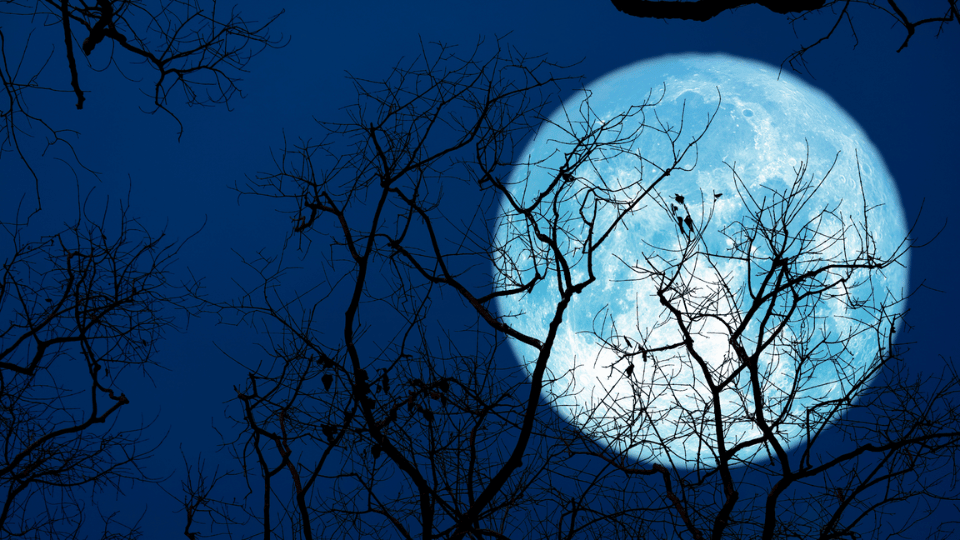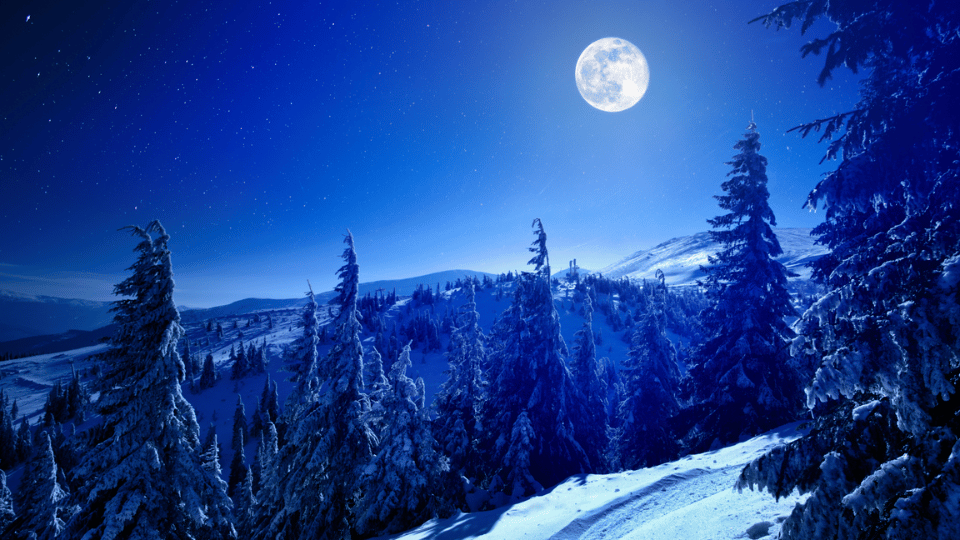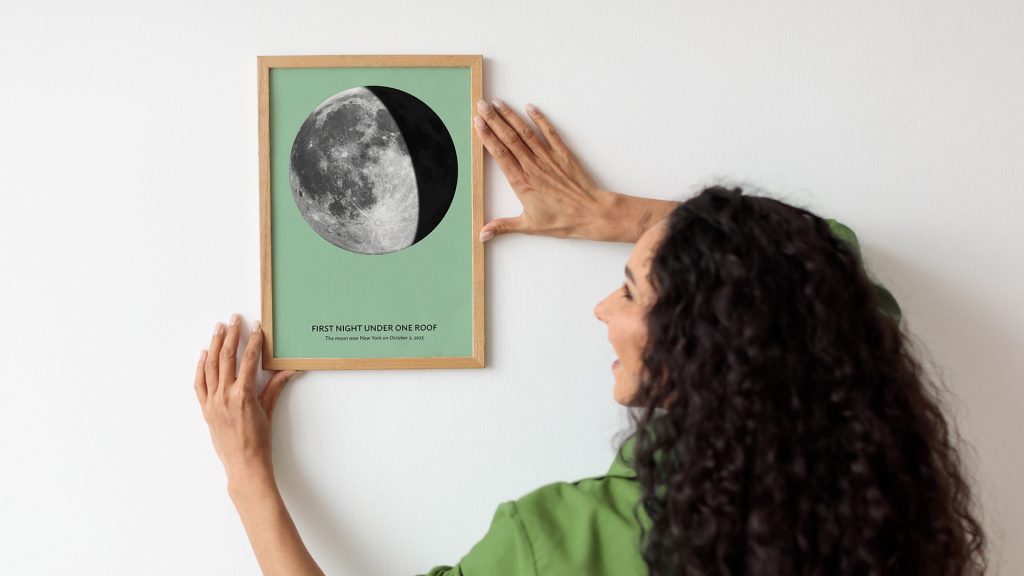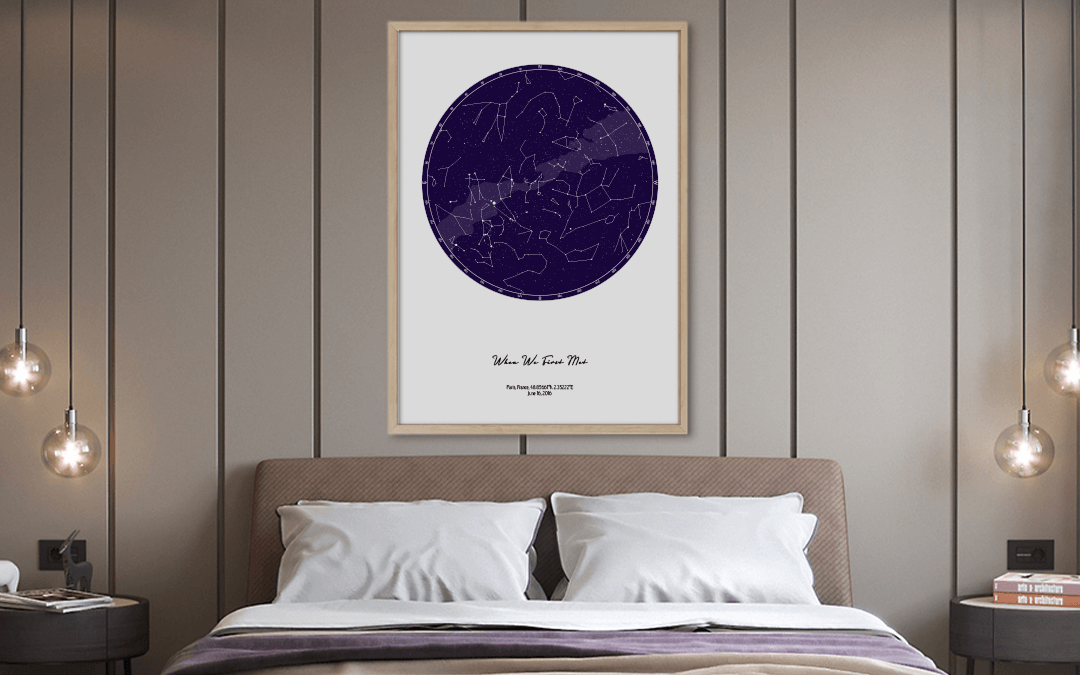The night sky has long been a canvas for human imagination, a source of inspiration, and a reflection of our connection to the cosmos. Among the celestial wonders that grace our heavens, few hold as much allure and symbolism as the full moon. These luminous orbs, when the Earth stands aligned with the sun and casts its glow upon the moon’s surface, have been a source of fascination and reverence for cultures worldwide. As we step into the year 2024, we find ourselves in the presence of a new cycle of full moons, each adorned with a unique name steeped in history, myth, and mysticism.
We will delve into the origins of these names, the traditions associated with them, and the deeper mystical meanings they hold for those who seek to connect with the natural rhythms of the cosmos. These full moons are more than just astronomical events; they are windows into the human experience, offering us an opportunity to reflect on our place in the universe, our connection to nature, and the wisdom of our ancestors.
Tuesday, January 23rd, 2024 — The Wolf Moon

The Wolf Moon: Unearthing the Spirit of the Wild
As the calendar flips to January, the year 2024 welcomes us with the enchanting radiance of the Wolf Moon. This celestial event, which graces the night sky on January 23rd, carries with it a name that conjures images of the untamed wilderness and the primal instincts of the wolf.
A Howling Legacy: The Origin of the Wolf Moon
The name “Wolf Moon” is believed to trace its roots back to Indigenous North American tribes, who used the names of full moons to mark the passage of time and guide their activities. In the heart of winter, when the nights are long, and the land lies shrouded in snow, wolves would often howl in hunger, seeking sustenance in the stark, frozen wilderness. These haunting and mournful calls of the wolves gave birth to the name “Wolf Moon.”
Wolves in Myth and Reality: Cultural and Historical Associations
Wolves have held a prominent place in the mythologies and cultures of various societies throughout history. To many Native American tribes, the wolf symbolizes courage, loyalty, and teamwork. In Norse mythology, the wolf Fenrir is a symbol of chaos and destruction, while to the Romani people, the wolf embodies protection and guidance. In literature and folklore, from Aesop’s fables to the Brothers Grimm’s tales, wolves often serve as archetypal figures, representing both danger and wisdom.
The Spiritual Essence of the Wolf Moon: Symbolism and Significance
The Wolf Moon, appearing at the peak of winter’s chill, serves as a potent reminder of the resilience of life even in the harshest conditions. It invites us to embrace our own inner strength and adaptability, mirroring the resourcefulness of the wolf pack. This moon is a time for introspection, drawing us to explore our instincts, courage, and the interconnectedness of all living beings.
Other Names: Old Moon, Ice Moon
Thursday, February 22nd, 2024 — The Snow Moon

The Snow Moon: Blanketing the World in Tranquil White
As we journey further into the lunar calendar of 2024, we arrive at the serene beauty of the Snow Moon, gracing the night sky on February 22nd. Named for the glistening snow that blankets the Northern Hemisphere during this time, the Snow Moon carries a sense of calm and transformation.
The Blanket of Winter: Origin of the Snow Moon
The name “Snow Moon” finds its roots in the deep connection between lunar phases and the natural world. Indigenous peoples of North America often named full moons to mark the changing seasons and help them keep track of time. For February, when snowfall is at its peak, the Snow Moon was a fitting moniker. It captures the essence of a world hushed by the soft, white embrace of snow.
Snow in Tradition and Ritual: Cultural and Historical Significance
Across cultures and time, snow has played a significant role in shaping human existence. In many societies, it is a symbol of purity, renewal, and transformation. Winter is a season of rest and introspection, a time when nature herself takes a deep breath before the rebirth of spring. The Snow Moon aligns with this period, inspiring rituals of reflection, meditation, and purification in various traditions.
The Snow Moon’s Message: Embracing Inner Silence and Renewal
The Snow Moon offers us a profound lesson in stillness and inner peace. As the world outside is hushed by the snow’s gentle touch, we are reminded of the importance of slowing down, turning inward, and embracing the tranquility within. Much like nature itself, we can use this phase to rest and replenish our spirits, preparing for the burst of growth and renewal that will come with the arrival of spring.
Other names: Storm Moon, Hunger Moon
Saturday, March 23rd, 2024 — The Worm Moon

The Worm Moon: Awakening the Earth’s Vital Pulse
March arrives with the promise of spring on the horizon, marked by the emergence of the Worm Moon on March 23rd. Named for the subtle but profound changes happening beneath the surface of the Earth, the Worm Moon signifies the awakening of life after the cold slumber of winter.
A Subterranean Awakening: The Origin of the Worm Moon
The name “Worm Moon” has its roots in the practices of Indigenous North American tribes, who often named full moons to mark the seasonal transitions and guide their agricultural activities. In March, as temperatures begin to rise, the ground thaws, and earthworms and other small creatures stir beneath the surface, preparing the soil for the upcoming growing season. This underground activity gave rise to the name “Worm Moon.”
The Role of Earthworms: Cultural and Historical Associations
Earthworms, seemingly humble creatures, have held a place of significance in various cultures and mythologies throughout history. They are often seen as symbols of fertility and renewal due to their role in enhancing soil quality. In folklore, earthworms are associated with the renewal of life and the healing properties of the Earth.
The Worm Moon’s Message: Renewal, Rebirth, and Regeneration
The Worm Moon heralds a season of renewal and rebirth. As the Earth awakens from its winter slumber, we are reminded of the cycles of life and the perpetual process of transformation.
Just as the Worm Moon marks the beginning of a new growing season, it prompts us to plant the seeds of our intentions and nurture them with care. It’s a time to shed the old, stagnant aspects of our lives and make way for the fresh and vibrant possibilities that spring holds.
Other names: Chaste Moon, Death Moon, Crust Moon, Sap Moon
Monday, April 22nd, 2024 — The Pink Moon

The Pink Moon: Celebrating Nature’s Blossoming Splendor
As April ushers in the beauty of spring, we are graced by the enchanting presence of the Pink Moon on April 22nd. Named for the vibrant blooms that start to paint the landscape with their hues, the Pink Moon embodies the spirit of renewal, growth, and the unfolding beauty of nature.
A Floral Symphony: The Origin of the Pink Moon
The name “Pink Moon” finds its origins in the observations of Native American tribes, particularly the Algonquin peoples, who named full moons to mark the changing seasons and assist in their daily lives. In April, the wild ground phlox, a pink wildflower, is known to bloom, adorning the landscape with its delicate petals. This spectacle of nature’s artistry led to the name “Pink Moon.”
The Symbolism of Blossoms: Cultural and Historical Significance
Throughout human history, blossoms and flowers have been imbued with rich symbolism. They represent beauty, fragility, and the transient nature of life. In various cultures, flowers have been associated with love, renewal, and the cyclical nature of existence. From ancient Greek mythology’s connection of flowers to deities like Persephone to the symbolism of cherry blossoms in Japanese culture, flowers hold a special place in the human psyche.
The Pink Moon’s Message: Embracing Beauty and Renewal
The Pink Moon arrives as a vivid reminder of the beauty that surrounds us and the impermanence of life’s fleeting moments. It calls upon us to embrace the present, to witness the blossoming of our own potential, and to revel in the radiant tapestry of existence. This moon serves as a beacon, illuminating the path to self-acceptance, self-love, and personal growth.
Other names: Sprouting Grass Moon, Egg Moon, Fish Moon
Tuesday, May 21st, 2024 — The Flower Moon

The Flower Moon: A Blooming Tapestry of Love and Growth
May arrives, and with it, the radiant beauty of the Flower Moon on May 21st. Named for the explosion of blossoms that paint the landscape in vivid colors, the Flower Moon represents the peak of spring’s vitality and the profound connection between love, growth, and the natural world.
A Blossoming Symphony: The Origin of the Flower Moon
The name “Flower Moon” is a testament to the profound connection between human life and the natural world. In May, when a breathtaking array of flowers begins to bloom, the world transforms into a living canvas of colors and scents. This explosion of floral beauty led to the name “Flower Moon.”
Flowers as Symbols: Cultural and Historical Associations
Throughout history, flowers have served as powerful symbols in human culture. They are linked to love, beauty, fertility, and rebirth. In ancient Greece, the goddess Aphrodite was associated with flowers, while in Buddhist mythology, the lotus represents purity and enlightenment. From weddings to funerals, flowers play a role in nearly every aspect of human life, embodying both fragility and resilience.
The Flower Moon’s Message: Love, Growth, and Personal Flourishing
The Flower Moon carries with it the essence of love, growth, and the fulfillment of potential. As nature bursts into bloom around us, it serves as a gentle reminder of our own capacity for growth and transformation. This moon encourages us to nurture our relationships, to cultivate self-love, and to embrace the beauty within and around us.
Just as the Flower Moon marks the zenith of nature’s blooming, it invites us to explore the depths of our own inner gardens. It reminds us that, like the flowers, we have the ability to blossom and share our unique beauty with the world. It is a time for personal growth, for strengthening bonds with loved ones, and for recognising the interconnectedness of all living beings.
Other names: Hare Moon, Corn Planting Moon, Milk Moon
Thursday, June 20th, 2024 — The Strawberry Moon

The Strawberry Moon: Harvesting the Sweetness of Life
As the sun reaches its zenith and the days grow longer, the Strawberry Moon graces the night sky on June 20th. Named for the luscious red berries that ripen during this time, this moon embodies the essence of abundance, gratitude, and the celebration of life’s sweet moments.
A Berry-licious Delight: The Origin of the Strawberry Moon
The name “Strawberry Moon” reflects the close connection between the lunar calendar and the cycles of nature. In June, strawberries, known for their delicious flavour and vibrant colour, ripen and are harvested, making this a time of abundance and celebration. Hence, the name “Strawberry Moon” was born.
Strawberries as Symbols: Cultural and Historical Associations
Throughout human history, strawberries have been a symbol of love, joy, and the sweetness of life. In Roman times, they were associated with Venus, the goddess of love, while in medieval Europe, strawberries were believed to have medicinal properties. Their heart-like shape and rich flavour have made them a favourite in various cultures, often appearing in rituals and celebrations.
The Strawberry Moon’s Message: Abundance, Gratitude, and Celebration
The Strawberry Moon arrives as a reminder to savour the sweet moments of life and to cultivate an attitude of gratitude for the abundance that surrounds us. Just as the Earth yields its fruit in this season, so too can we enjoy the fruits of our labor and the richness of our experiences. This moon encourages us to celebrate our achievements, relationships, and the simple joys that make life sweet.
Other names: Rose Moon
Related Reading: The Meaning of Being Born on a Full Moon
Friday, July 19th, 2024 – The Buck Moon

The Buck Moon: Guiding Us with Strength and Perseverance
July arrives with the magnificent presence of the Buck Moon on July 19th. Named for the regal male deer that begins to grow its new antlers during this period, the Buck Moon symbolises strength, determination, and the unyielding spirit of nature.
A Majestic Emblem: The Origin of the Buck Moon
The name “Buck Moon” draws its inspiration from the practices of the Algonquin tribe, who assigned names to full moons to mark the changing seasons and aid in their hunting and gathering activities. In July, the bucks, or male deer, begin to grow their antlers in preparation for the upcoming mating season. This transformation and growth led to the name “Buck Moon.”
The Buck as Symbol: Cultural and Historical Associations
Deer, and specifically male deer, have held symbolic significance in cultures worldwide. They are often associated with attributes such as strength, nobility, and protection. In Native American traditions, the deer represents sensitivity and intuition, while in Celtic mythology, the stag is a symbol of independence and virility. Deer are also connected to the cycle of life, death, and rebirth.
The Buck Moon’s Message: Embracing Inner Strength and Perseverance
The Buck Moon arrives as a symbol of the strength and resilience that resides within us all. Just as the male deer grows its antlers in preparation for challenges, we, too, can tap into our inner reserves of determination and endurance. This moon encourages us to stand tall, face adversity with grace, and navigate life’s hurdles with unwavering strength.
Other names: Hay Moon
Sunday, August 18th, 2024 — The Sturgeon Moon

The Sturgeon Moon: Abundance and Prosperity Beneath the Surface
As August graces us with its warmth, the Sturgeon Moon emerges on August 18th, bearing a name that reflects the abundance of life hidden beneath the surface of rivers and lakes. This moon signifies prosperity, sustenance, and the interconnectedness of all living beings.
An Aquatic Bounty: The Origin of the Sturgeon Moon
The name “Sturgeon Moon” owes its existence to the practices of Indigenous North American tribes, particularly those around the Great Lakes and the Northeast. In August, the sturgeon fish, known for its massive size and significance as a source of food and livelihood, is plentiful in many bodies of water. This period of aquatic abundance led to the name “Sturgeon Moon.”
The Sturgeon as Symbol: Cultural and Historical Associations
The sturgeon fish has a long history of importance in various cultures. In Native American traditions, it symbolises longevity, strength, and sustenance. Among the Anishinaabe people, the sturgeon holds a sacred place and is honoured with ceremonies and rituals. In European folklore, the sturgeon was seen as a symbol of good luck and fortune.
The Sturgeon Moon’s Message: Embracing Abundance and Sharing Blessings
The Sturgeon Moon serves as a reminder of the interconnectedness of all life and the abundance that can be found beneath the surface, both in nature and within ourselves.
As harvest season approaches, the Sturgeon Moon invites us to share our blessings with others and give back to our communities. It is a time to acknowledge the gifts we have received and to practice gratitude for the abundance that surrounds us. The Sturgeon Moon calls us to be mindful of the delicate balance of nature and our role in preserving it.
Other names: Green Corn Moon, Grain Moon, Red Moon
Monday, September 16th, 2024 — The Corn Moon (and Harvest Moon)

The Corn Moon: Harvesting Abundance and Sustenance
With the transition into September, the Corn Moon graces the night sky on September 16th. Named for the bountiful harvests of corn and other crops that mark the season, this moon represents abundance, sustenance, and the interconnectedness of humanity and the Earth’s resources.
A Harvest’s Reward: The Origin of the Corn Moon
The name “Corn Moon” is a testament to the deep connection between the lunar calendar and the cycles of agriculture. In September, the corn harvest is typically at its peak, and this essential crop has historically been a symbol of sustenance and prosperity. Thus, the name “Corn Moon” was bestowed upon this lunar phase.
Corn as a Symbol: Cultural and Historical Associations
Throughout history, corn has held significant cultural and symbolic value in numerous societies. In Native American traditions, corn is often referred to as “the giver of life” and is seen as a symbol of fertility, nourishment, and community. Corn is central to many Indigenous ceremonies and rituals. Additionally, in many cultures worldwide, corn is a staple crop, and its cultivation has shaped the course of human history.
The Corn Moon’s Message: Nurturing Body and Soul
In the season of harvest, the Corn Moon invites us to reflect on the fruits of our labor, both literal and metaphorical. It is a time to acknowledge the abundance that flows through our lives, to share the harvest with others, and to nurture our own well-being, body, and soul. The Corn Moon calls us to consider the balance between taking from the Earth and giving back, honouring the cycles of nature.
Other names: Barley Moon
Tuesday, October 15th, 2024 — The Hunter’s Moon

The Hunter’s Moon: Reflection and Preparation in the Moonlight
October arrives with the mysterious allure of the Hunter’s Moon on October 15th. Named for the moon’s significance in guiding nocturnal hunting and gathering activities, this moon represents reflection, preparation, and the eternal cycle of life and death.
Guiding the Hunt: The Origin of the Hunter’s Moon
The name “Hunter’s Moon” hearkens back to the practices of the Algonquin people, who used full moon names to track the seasons and guide their hunting expeditions. In October, as the days grow shorter and colder, the moon’s radiant light served as a vital beacon for hunters and gatherers, aiding them in their nocturnal pursuits of sustenance.
The Hunter as a Symbol: Cultural and Historical Associations
The concept of hunting holds deep cultural and historical significance in the human experience. Throughout history, hunters have been celebrated as providers and protectors of their communities. Various cultures have incorporated hunting rituals into their traditions, often imbuing them with elements of spiritual significance. The Hunter’s Moon echoes this reverence for the cycle of life and death.
The Hunter’s Moon’s Message: Reflection, Preparation, and Honouring Ancestry
The Hunter’s Moon arrives as a time of reflection and preparation. It prompts us to look back on the year’s experiences, acknowledge our successes, and learn from our challenges.
As winter draws near once again, the Hunter’s Moon invites us to honour our ancestors and connect with the wisdom of those who came before us. It is a time to recognise the cyclical nature of life and death, both in the natural world and within ourselves. This moon calls us to embrace the duality of existence and to find solace in the knowledge that from endings come new beginnings.
Other names: Travel Moon, Dying Grass Moon
Thursday, November 14th, 2024 — The Beaver Moon

The Beaver Moon: Building Dreams, Embracing Industry
As November sweeps in with its crisp, autumnal charm, the Beaver Moon graces the night sky on November 14th. Named for the beaver’s industrious activities during this season, this moon represents diligence, resourcefulness, and the pursuit of dreams.
Building Dreams: The Origin of the Beaver Moon
In November, as the days grow colder and rivers and lakes begin to freeze, beavers become especially active, building and repairing their dams and lodges in preparation for winter. Their tireless industry led to the name “Beaver Moon.”
The Beaver as a Symbol: Cultural and Historical Associations
Throughout history, beavers have been revered for their industry and adaptability. In Native American traditions, beavers are often seen as symbols of hard work, cooperation, and the importance of community. In European folklore, beavers were associated with industriousness and the pursuit of goals. The beaver’s ability to transform its environment has made it a respected figure in many cultures.
The Beaver Moon’s Message: Diligence, Resourcefulness, and Realising Dreams
The Beaver Moon arrives as a reminder of the power of diligence and resourcefulness. In the season of preparation for winter, the Beaver Moon inspires us to build the structures necessary for our own well-being and growth. It encourages us to embrace the process of transformation, to work diligently toward our dreams, and to recognise the interconnectedness of our efforts with the greater community. The Beaver Moon calls us to be architects of our destiny.
Other names: Frost Moon
Friday, December 13th, 2024 — The Cold Moon

The Cold Moon: Embracing Stillness and Inner Warmth
As December brings the chill of winter, the Cold Moon graces the night sky on December 13th. Named for the frigid temperatures that envelop the Northern Hemisphere during this period, this moon represents stillness, reflection, and the inner warmth that can be found in moments of quietude.
Embracing Winter’s Chill: The Origin of the Cold Moon
The name “Cold Moon” reflects the deep connection between the lunar calendar and the natural world’s seasonal shifts. Indigenous North American tribes named full moons to mark the changing seasons and guide their activities. In December, as the winter cold intensifies and the land lies cloaked in snow and ice, the name “Cold Moon” aptly captures the essence of this time.
Winter’s Stillness: Cultural and Historical Associations
Winter holds a special place in the human psyche, and its stillness has been a source of inspiration for countless generations. In various cultures, the winter season is seen as a time of rest, reflection, and inner contemplation. The Cold Moon resonates with the idea that even in the harshest conditions, there is beauty to be found in the serenity of winter.
The Cold Moon’s Message: Embracing Inner Warmth
In the heart of winter, the Cold Moon invites us to slow down, turn our focus inward, and cultivate a sense of peace and tranquility. It is a time to reflect on the lessons and experiences of the past year, to find comfort in the present moment, and to prepare for the new year’s potential. The Cold Moon calls us to find light and warmth within ourselves and to appreciate the beauty of life’s quiet moments.
Other names: Long Night Moon, Oak Moon
Embracing the Mystical Meanings of the Full Moons
As our journey through the celestial tapestry of the full moons of 2024 comes to a close, we have explored the enchanting origins, cultural symbolism, and deep spiritual significance of each moon. From the mystical allure of the Wolf Moon in January to the serene stillness of the Cold Moon in December, these lunar phases have offered us wisdom, guidance, and a profound connection to the natural world.
As we move into a new year and a new cycle of full moons, may we continue to be inspired by the mystical meanings behind their names, and may the light of the moon always illuminate our path, bringing us wisdom, insight, and a sense of wonder for the world around us.

If you have a loved one with a birthday or any other special event that falls on a full moon in 2024, why not create the unique gift of a Moon Phase Poster to celebrate this serendipitous occasion? All of our prints are fully customisable, so you can craft something truly one-of-kind for that special person in your life.






































